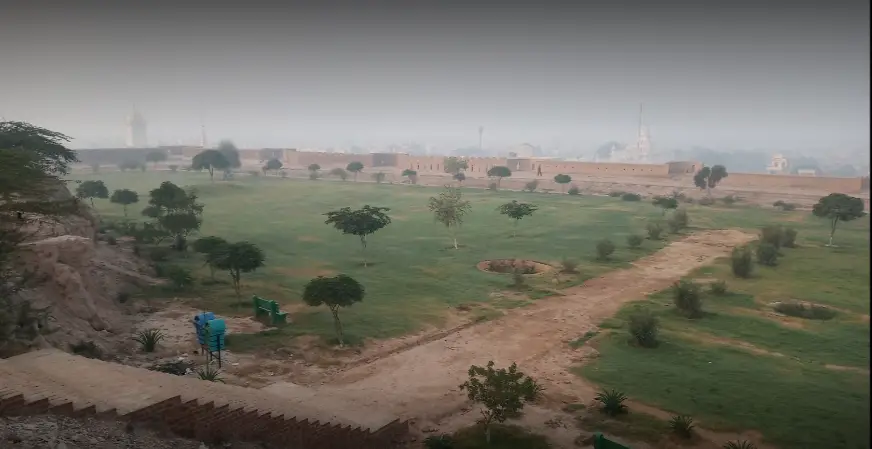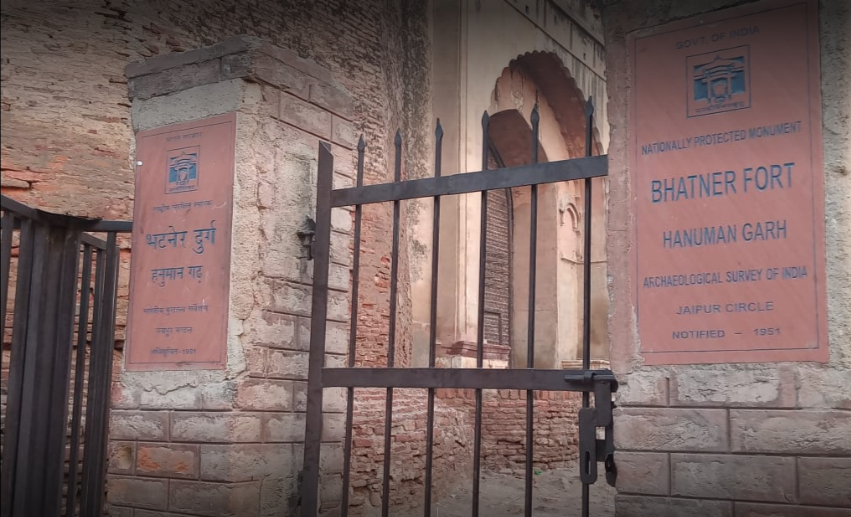Bhatner Fort is located in the Hanumangarh district of Rajasthan. the bhatner Fort was built by Bhati Raja Bhupat Singh of Jaisalmer. This fort was built in a deserted land and dense forest on the banks of river Ghaggar, which is known today as the crown of Hanumangarh.
History of Bhatner Fort Hanuamgarh Rajasthan
In 1805, Raja Surat Singh of Bikaner defeated the Bhati rulers of Jaisalmer and took it under his control. It is said that in this Bhatner fort, great importance has been given to Hanuman Ji. The day Surat Singh defeated the Bhatis was Tuesday. For this reason, this city was also named Hanumangarh.
All the external attacks on India passed through the route of Bhatner, which is why Timur, Prithviraj Chauhan, Akbar, Qutubuddin Aibak and Rathore, etc. ruled it. Timur in his biography ‘Tujuk-e-Taimuri’ described Bhatner as India’s strongest fort. Sher Shah Suri is buried in this fort.
Bhatner’s fort located in Hanumangarh, on the banks of the Ghaggar river, has been placed in the category of Dhawan fort due to being surrounded by desert. Being located on the Delhi-Multan route, it also had strategic importance. According to Jan Shruti, this fort was built by Bhati King Bhupat in the last phase of the third century.
This fort is spread over 52 bighas of land. There are 52 huge bastions in it, the fort is built of ripe bricks and lime. Because Maharaja Surat Singh of Bikaner taking possession of this fort on Tuesday, in 1805 AD, Bhatner was renamed Hanumangarh and a temple of Hanumanji was also built in the fort.
Mahmud Ghaznavi captured Bhatner in 1001 AD. Sherkhan was the ruler of this place during the reign of Balban. Which retaliated against the Mongol invaders from here. Sher Khan’s graves still exist inside the fort. In 1398 AD, Timur attacked Bhatner and looted it.
For the first time in 1527, Rao Jaitasi established the Rathore suzerainty over the fort. At the time of Humayun’s brother Kamaraj’s attack, Rao Khetasi showed immense valor for the fort’s defense and Virgati was received. In 1549, Rathore Thakursi took over Bhatner.
Thakursi was the ruler of Bhatner for nearly 20 years. Once during the reign of Mughal emperor Akbar, the royal treasury was being moved from Kashmir and Lahore to Delhi, then plundered in the Machli village of the Bhatner pargana.
When information about this reached Akbar, he ordered the Nizamulmulk, the Subedar of Hisar to attack Bhatner with an army. Thakursi attained heroism while fighting the imperial army with a thousand warriors.
In 1570, Akbar took over Bhatner, but pleased with the service of Thakursi’s son Bagha, Bhatner handed over to him. Subsequently, this fort remained under the authority of the rulers of Bikaner.
Bagha built a temple of Gorakhnath thereafter meeting Bhatner. In Tawarikh “Dayaldas Khyat” related to the history of Bikaner, an incident occurred in the fort of Bhatner in 1597 AD.
Once upon a time, Nasir Khan, an inmate of Akbar, came to Bhatner. He molested a female servant there. Due to which at the behest of Raisingh, his servant Teja beaten Nasir Khan. Nasir Khan complained to Akbar, which angered Akbar Raisingh.

There was a struggle between Bhatis and Johis over Bhatner and the ownership of the fort kept changing. Finally, in 1805 AD it went under the occupation of Bikaner. Bhatner is also called the guard of the northern border.
The fort of Bhatner is only 5 kilometers from Hanumangarh railway station and you can easily reach here from Hanumangarh.
Although currently, this fort is in a fractal and shabby state However, in this condition, it is grand and dignified.
At one entrance of the fort, six female figures (chhatris) are made with a king. Who was persecuted in Bhatner after the death of Dalpat Singh
Bhatner fort Hanumangarh Timing
10.00 AM to 06.00 PM
Bhatner fort Hanumangarh Entry Fee
00 / No Ticket
How to reach Bhatner Fort Hanumangarh
Near Railway Station Hanumangarh 6KM

My self Dev Satish. I’m an Author and Founder of tourism-rajasthan.com. I’m from Rajasthan and If I talk about my Education then I’m Law Graduate. I love doing work that makes me happy, that’s why I love traveling. you will find Rajasthan travel ideas & tips on this blog.
